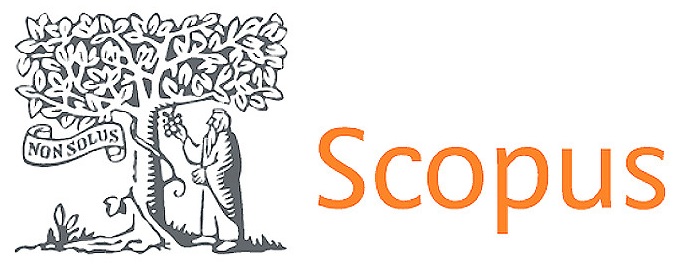Efficacy of Opuntia Ficus Extract as a lipid-lowering agent in experimental animals
DOI:
https://doi.org/10.56294/saludcyt2023672Keywords:
Normolipemiant, Opuntia ficus-indica, Cholesterol, HDL, LDL, TriglyceridesAbstract
Introduction: the therapeutic use of medicinal plants; It has been very useful to cure diseases since ancient times in application to "traditional medicine". There is an increase in "Chronic Noncommunicable Diseases", such as diabetes, atherosclerosis, hyperlipidemia, and stroke.
Aim: therefore, the lipid-lowering activity of Opuntia Ficus Indica was evaluated in Wistar rats.
Methods: seven groups of seven animals each were formed, normal group, negative (without treatment), positive (atorvastatin), group (Opuntia Streptacantha), 3 groups (opuntia ficus indica different doses). Initial values of the lipid profile were determined, hyperlipidemia was induced from the administration of a hypercaloric diet (31,52 % carbohydrates and 28,33 % total fat) for 60 days, once dyslipidemia was verified, the treatments were administered to each group, respectively. Determinations of lipid profile values were made at 7, 14 and 21 days of treatments.
Results: the results obtained: total cholesterol from the seventh day of administration of the post-hyperlipidemia treatments, regularized to normal values such as (58,1 ± 10 mg/dl), compared to the negative control (group B ) (127,25 ± 14,12 mg/dl), maintaining this trend on day 21 of treatment. The HDL from day 7 of administration the values began to normalize in all the OFI treatment groups (18,3 ± 3,4 mg/dl), on day 21 the group that was administered the dose of 62.5 mg/Kg, in which the HDL values (25,6±3,3 mg/dl) were normalized.
Conclusion: it is concluded that OFI extracts regulated lipid values in experimental animals
References
1. Popkin B. El impacto de los alimentos ultraprocesados en la salud. FAO. 2020; (34): 4-24. https://www.fao.org/3/ca7349es/CA7349ES.pdf
2. Serra Valdés M, Serra Ruíz M, Viera García M. Las enfermedades crónicas no transmisibles: magnitud actual y tendencias futuras. Rev. Finlay 2018;8(2):140-148. http://scielo.sld.cu/scielo.php?script=sci_arttext&pid=S2221-24342018000200008&lng=es
3. Landrove-Rodríguez O, Morejón-Giraldoni A, Venero-Fernández S, Suárez-Medina R, Almaguer-López M, Pallarols-Mariño E, et al. Enfermedades no transmisibles: factores de riesgo y acciones para su prevención y control en Cuba. Rev Panam Salud Publica 2018;42(23). https://doi.org/10.26633/RPSP.2018.23
4. Organización Mundial de la Salud. Actividad física. OMS; 2022. https://www.who.int/es/news-room/fact-sheets/detail/physical-activity
5. Ruiz J, Letamendi J, Calderón R. Prevalencia de dislipidemias en pacientes obesos. MEDISAN 2020; 24(2): 221-222. https://www.redalyc.org/journal/3684/368463016005/html/
6. Organización Mundial de la Salud. Enfermedades no transmisibles. OMS 2022 https://www.who.int/es/news-room/fact-sheets/detail/noncommunicable-diseas_es
7. Goñi M. Propiedades de los alimentos. CINFASALUD 2016 https://cinfasalud.cinfa.com/p/propiedades-de-los-alimentos/
8. Torres-Ponce, Reyna Lizeth et al. El nopal: planta del semidesierto con aplicaciones en farmacia, alimentos y nutrición animal. Rev. Mex. Cienc. Agríc 2015; 6(5): 1129-1142. http://www.scielo.org.mx/scielo.php?script=sci_arttext&pid=S2007-09342015000500018&lng=es&nrm=iso
9. Bocanegra J, Lazalde B, Gutierrez R et al. Uso de mucilago de opuntia ficus-indica como tratamiento en obesidad y su efecto en tejido hepático y renal. Rev. Ibn Sina 2021; 12(2): 1129-1142. https://doi.org/10.48777/ibnsina.v12i2.1025
10. Luna- Zapién E, Zegbe J et al. Mucílago de nopal (opuntia spp.) y su aplicación como aditivo alimentario: una visión general. Rev. Fitotec 2023; 46(1):56-61. https://revistafitotecniamexicana.org/documentos/46-1/6a.pdf
11. García N. Optimización de la extracción acuosa y secado del biopolímero de nopal (opuntia ficus-indica). Universidad de Chile 2017. https://repositorio.uchile.cl/bitstream/handle/2250/151051/Optimizaci%c3%b3n-de-la-extraccion-acuosa-y-secado-del-biopolimero-de-nopal-%28Opuntia-Ficus-Indica%29.pdf?sequence=1&isAllowed=
12. Rodriguez Y. Evaluación del mucílago de nopal (Opuntia ficus-indica) como agente estabilizante en néctar de maracuyá (Passiflora edulis). Rev. Ciencia Unisalle [Internet]. 2017 Ene [citado 2023 May 19]: 2-84. Disponible en: https://ciencia.lasalle.edu.co/cgi/viewcontent.cgi?article=1066&context=ing_alimentos
13. Islam M, Choi H. Green tea, anti-diabetic or diabetogenic: a dose response study. Biofactors. 2007;29(1):45-53. doi: 10.1002/biof.5520290105.
14. Fernandez M, Lin E, McNamara D. Differential effects of saturated fatty acids on low density lipoprotein metabolism in the guinea pig. J Lipid Res. 1992 Dec;33(12):1833-42. https://pubmed.ncbi.nlm.nih.gov/1336027/
15. Cárdenas M, Serna S, Velazco J. Efecto de la ingestión de nopal crudo y cocido (Opuntia ficus indica) en el crecimiento y perfil de colesterol total, lipoproteína y glucosa en sangre de ratas. Arch. latinoam Nutr. 1998; 48(4); 316-23
Published
Issue
Section
License
Copyright (c) 2023 Glenda Sarmiento Tomalá, Stuart Nelson Montoya Vizuete, Pilar Soledispa Cañarte, Zoraida Burbano Gomez, María C Villacres, Sandra Elizabeth Vizuete Proaño (Author)

This work is licensed under a Creative Commons Attribution 4.0 International License.
The article is distributed under the Creative Commons Attribution 4.0 License. Unless otherwise stated, associated published material is distributed under the same licence.



